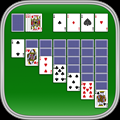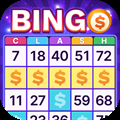
Introduction to the Fireball
The Fireball is a Rare spell card that becomes available for players to unlock through the Training Camp. It has an Elixir cost of 4 and is designed to deal high damage in a small area, impacting both air and ground troops within a 2.5-tile radius. While it provides substantial damage to troops, it’s important to note that the Fireball delivers reduced damage to Crown Towers.
This spell is considered by many to be a critical card in Clash Royale Fireball Guide, offering incredible value when used effectively. When mastered, the Fireball can provide greater value than its 4 Elixir cost, making it an essential tool for countering higher-cost cards or card combinations. Properly timing and positioning the Fireball can turn the tide of a match, making it a key component of strategy in Clash Royale.
Basic Usage and Obtaining Value
The core strategy behind using the Fireball effectively in Clash Royale revolves around achieving positive Elixir trades. By using the Fireball, which costs 4 Elixir, to counter enemy cards or combinations that cost more than 4 Elixir, you gain an Elixir advantage. Consistently making these advantageous plays allows you to build an Elixir lead, enabling you to deploy stronger combinations of cards that your opponent may struggle to defend due to their Elixir deficit.
There are several straightforward scenarios where using the Fireball can result in immediate Elixir profit. For instance, Fireballing a group of Barbarians (costing 5 Elixir) will give you a 1 Elixir advantage. Similarly, Fireballing a Minion Horde, also costing 5 Elixir, provides the same 1 Elixir advantage. If your Fireball is one level higher than an opposing Wizard (typically costing 5 Elixir), you can eliminate the Wizard and gain 1 Elixir profit. One of the most significant Elixir advantages occurs when using the Fireball on Three Musketeers (costing 9 Elixir) if they are one level lower than your Fireball, resulting in a 5 Elixir profit.
However, to truly maximize the Fireball’s potential, it’s essential not to focus solely on these direct +1 Elixir trades. The Fireball’s true strength comes from its ability to impact multiple targets at once. Therefore, while understanding these one-on-one trades is important, you should look for opportunities to hit several enemy units or buildings with a single Fireball.
Patience is key to fully exploiting the Fireball’s value. Often, players will deploy supporting troops behind an initial push, and instead of immediately using the Fireball on the first wave, like Barbarians, it’s often more beneficial to wait. By holding off until both the Barbarians and a supporting unit, such as a Wizard, are within range, you can eliminate both with a single Fireball, gaining a significant Elixir advantage. This proactive approach to targeting multiple units is an essential part of mastering Fireball usage and ensuring consistent value in your matches.
Advanced Strategies and Tactics
Beyond basic Elixir trades, the Fireball offers several advanced strategic applications that can significantly impact the outcome of a Clash Royale match. These involve targeting multiple units and buildings, utilizing the knockback effect, making predictive plays, engaging in mind games, and employing the Fireball defensively.
To maximize the value of your Fireball, always look for opportunities to hit multiple targets. The Fireball deals area damage to everything within its 2.5-tile radius. A crucial tip for accurate Fireball placement is to aim for the shadow of the troops. Instead of using the Fireball on a lone building, try to find situations where you can hit two buildings simultaneously, or a building and a troop, or multiple troops at once.
Examples include hitting the Elixir Collector and Archers together, the Inferno Tower and Musketeer together, or a large group like Barbarians, Minion Horde, and Spear Goblins all at once. This can be a game-changing move. When facing decks that rely on multiple huts or defensive buildings, the Fireball becomes a valuable tool. Aim to hit multiple huts and potentially the Arena Tower at the same time. Patience is key in these scenarios, allowing more units to group together.
The Fireball’s knockback effect can be used strategically in several ways. Use the knockback to push enemy troops into your long-range units, allowing them to deal more damage. It can also cause enemy troops to retarget, giving your troops valuable extra seconds to attack. With precise timing, a Fireball can fully counter a Balloon by knocking it back before it reaches your tower, minimizing damage and making a positive Elixir trade.
The Fireball also has a stun effect that can reset the attack animations of small to medium-sized troops. Additionally, a well-placed Fireball can knock a small troop near the center of the Arena, potentially pushing it into the other lane, which can be useful for diverting units to a better-defended lane. However, a Tornado is often more reliable for this purpose. The knockback can also help your troops finish off enemies before they can deal damage and can even reset the charge of a Ram Rider.
Skilled Fireball usage involves anticipating your opponent’s actions. Predict where the enemy might place a unit and send your Fireball slightly early. Due to the Fireball’s travel time, this can result in the unit dying upon being summoned or taking significant damage and being pushed back. This is particularly effective against defensive structures like Cannons or Elixir Collectors. If you can figure out your opponent’s deck and their card cycle, you can predict when they will deploy certain cards to counter your pushes.
For example, if they consistently use Barbarians to defend against your Hog Rider, you can send a Fireball in anticipation to hit both the Barbarians and the Arena Tower for significant value. By frequently using the Fireball in a particular area of the Arena, you can sometimes lure your opponent into deploying troops in a different location, allowing you to respond more effectively. The mere possibility of having a Fireball can also influence your opponent’s decisions, preventing them from grouping their troops too closely or committing to large pushes.
While primarily an offensive spell, the Fireball can also be used defensively. Use it to stop an opposing force that is swarming your tower or to interrupt their advance. A defensive Fireball can buy you valuable time for your counter-push. In the later stages of a match, especially during Overtime, the Fireball can be crucial for quickly finishing off a low-health enemy Crown Tower. However, be mindful of its reduced damage to towers.
By mastering these advanced strategies, you can elevate your Fireball usage from simple Elixir trades to game-changing plays that consistently pressure your opponents and secure victories.
Specific Card Interactions
The Fireball in Clash Royale has several specific interactions with other cards, which can lead to advantageous Elixir trades or provide significant strategic benefits. Understanding these interactions is key to using the Fireball effectively and gaining an Elixir advantage.
When used against Barbarians (costing 5 Elixir), a Fireball (costing 4 Elixir) results in a +1 Elixir trade. If the Barbarians are supported by a ranged attacker like a Wizard, waiting to Fireball both simultaneously can yield even greater value. Similarly, Fireballing a Minion Horde (costing 5 Elixir) provides a +1 Elixir trade, but be sure to hit at least 5 Minions to avoid a negative trade. Against a Wizard, if your Fireball is one level higher than the opposing Wizard (typically costing 5 Elixir), you can eliminate it for a +1 Elixir profit.
Fireballing Three Musketeers (costing 9 Elixir) that are one level lower than your Fireball results in a significant +5 Elixir profit. If the Three Musketeers are split, targeting the side with two Musketeers can still provide a valuable play. Against a Witch, while hitting her and the Arena Tower with a Fireball may seem appealing, it’s often better to wait and hit the Witch along with her spawned Skeletons and any supporting troops for greater value.
Using the Fireball against a Mortar (costing 4 Elixir) in a one-on-one situation is generally not recommended, as it only deals about 45% damage, resulting in a negative trade. Instead, try Fireballing the Mortar along with defending troops like Barbarians. Similarly, Fireballing an Elixir Collector (costing 5 Elixir) on its own is typically a bad move, as it only deals about 40% damage, effectively giving your opponent an Elixir lead. During the first two minutes of the match, it’s often better to punish an Elixir Collector with a strong push, but in the last minute and overtime, using the Fireball on the Collector can be a viable strategy to deny your opponent extra Elixir.
When it comes to buildings like huts or defensive structures, instead of Fireballing a single building, aim to hit multiple buildings or a building and a troop simultaneously for better value. This is especially effective against hut-spamming decks. Additionally, a Fireball can destroy Zappies, Skeleton Dragons, Mother Witch, or Magic Archer up to 2 levels higher for a neutral Elixir trade, and a Flying Machine up to 1 level higher.
Fireball can also be combined with Spirit cards (Electro Spirit, Ice Spirit, Heal Spirit, Fire Spirit) to defeat certain units at a lower Elixir cost than using two spells alone. For example, using Electro Spirit, Ice Spirit, or Heal Spirit can defeat units up to Elixir Golemites, while Fire Spirit can defeat units up to a Cannon Cart.
Against a Balloon, a well-timed Fireball aimed at the bottom of its shadow can knock it back before it reaches your tower, resulting in a positive Elixir trade. The Fireball’s knockback effect can also be used to push enemy troops into the range of your other units, causing them to retarget and giving your troops more time to attack. In rare situations, the knockback can push a Miner toward the King’s Tower, activating it, though this is generally a negative Elixir trade.
Understanding these specific card interactions is essential for using the Fireball effectively to gain Elixir advantages and control the flow of the match. Always consider the Elixir costs and potential value before casting your Fireball.
When NOT to Use the Fireball
There are several situations in Clash Royale where using the Fireball is not advisable, as it can lead to an Elixir disadvantage or missed opportunities for greater value. It is generally unwise to use the Fireball on lone high hitpoint troops like a Giant, P.E.K.K.A, Ice Golem, Knight, Prince, Valkyrie, or Battle Healer. These troops will survive the Fireball with significant health remaining, and you’ll have spent 4 Elixir with little impact, potentially resulting in a negative Elixir trade. Moreover, you may also struggle to deal with any support troops behind them.
Fireballing a lone defensive building like a Cannon or Bomb Tower is also a poor choice. The Fireball won’t destroy the building and will leave you at a 4 Elixir disadvantage, while the building continues to perform its defensive role. Similarly, using a Fireball on an X-Bow or Mortar in siege position will usually only remove less than half of their health, leaving you with an Elixir deficit while the siege building continues to attack.
It’s also inefficient to use the Fireball on cheap troops like Skeletons, Fire Spirits, or other low-cost swarm units. While it might seem tempting, using a 4 Elixir Fireball on such troops is almost always a bad idea, leading to a negative Elixir trade. Cheaper spells like Zap or The Log are much more efficient for dealing with these units. Fireballing an opponent’s Crown Tower at the start of the match for chip damage is another poor strategy. It wastes your Fireball, puts you at a -4 Elixir disadvantage, and reveals your hand early, allowing your opponent to deploy more Fireball-vulnerable troops without immediate risk.
Using the Fireball on a lone Elixir Collector during the early to mid-game is typically a mistake as well. While the Fireball does damage, the Elixir Collector will still generate significant Elixir, giving your opponent an Elixir lead. It’s better to save your Elixir and mount a strong push instead. However, in the last minute or overtime, using the Fireball on the Elixir Collector can be a viable tactic to prevent your opponent from gaining a large Elixir advantage. Fireballing a Mortar on its own is also inefficient, as it only deals around 45% of the Mortar’s health, effectively wasting 2 Elixir. It’s better to wait and hit the Mortar along with defending troops.
Using the Fireball on a Minion Horde is also risky if you can’t hit at least five Minions. In such cases, the Fireball will result in a negative Elixir trade. Predicting your opponent’s moves without scouting their deck can be a mistake as well. Using your Fireball too early might waste it on a less critical target, leaving you without it when a more valuable opportunity arises, such as countering a Three Musketeers split.
Finally, Fireballing defensive units like the Ice Wizard or Mega Minion is generally not recommended. They will likely survive the Fireball and continue their defensive role, leaving you with a negative Elixir trade. It’s usually better to counter them with cheaper units or save your Fireball for a more impactful offensive or counter-push opportunity.
By avoiding these situations, you can use the Fireball more efficiently and maximize its potential to gain Elixir advantages and control the battlefield.
Tips and Tricks
The Fireball is a powerful and versatile spell in Clash Royale, offering a range of strategic advantages when used correctly. As a 4 Elixir Rare spell, the Fireball deals high area damage to both air and ground units within a 2.5-tile radius and has a knockback effect, though it deals reduced damage to Crown Towers. To maximize its effectiveness, start by prioritizing high-value targets. Look for opportunities to hit clustered troops or support units that are grouped with heavier troops, such as Wizards, Witches, and Musketeers. These troops often cost more Elixir than the Fireball and can be eliminated or significantly weakened with a single cast.
Seek positive Elixir trades by using the Fireball to counter cards or combos that cost more than 4 Elixir. For example, Fireballing Barbarians (5 Elixir) results in a +1 Elixir trade. To get the most out of your Fireball, be patient. Wait for an opportunity to hit multiple units or a high-value target and support troop at once. For instance, if your opponent places Barbarians, wait to see if they deploy a Wizard or other support troops so you can take them both out with a single Fireball.
The Fireball is particularly effective against hut and defense spam decks, which use multiple defensive buildings or spawners. Instead of wasting a Fireball on a lone building, look for chances to hit two buildings or a building and a troop simultaneously. Similarly, learn profitable one-on-one scenarios where Fireballing a single troop offers a positive Elixir trade, such as against Barbarians, Minion Horde, or a Wizard that is one level lower than your Fireball.
Mastering timing is essential. Don’t rush your Fireball; instead, wait for the optimal moment to cast it, especially when your opponent drops a group of troops behind a tower or other unit. This ensures you hit the maximum number of targets and get the most damage out of the spell. Additionally, don’t underestimate Fireball’s ability to deal tower damage. In the later stages of a match, especially in Siege and Control decks, Fireball can be used for spell cycling to finish off a low-health Crown Tower.
While primarily an offensive spell, the Fireball also has its defensive uses. It can stop swarming units or interrupt an advancing push, buying time for your counter-push or preventing significant tower damage. Aim carefully when casting Fireball, especially since the spell has a travel time. To increase accuracy, aim for the shadow of the troops and consider the positioning of units at the edge of the Fireball’s radius.
Using predictive plays is another advanced technique for maximizing Fireball’s effectiveness. If you anticipate where your opponent will place a support troop or anticipate their movement patterns, casting your Fireball early can help you catch both the support troop and a larger tank or push. The threat of a Fireball can also force your opponent to rethink their troop placement, often preventing them from grouping units together. Utilizing Fireball’s knockback effect can push enemy troops into the range of your long-range units, giving them more time to deal damage, or causing them to retarget and provide your units extra attack time.
There are also times when you don’t need to always aim for the Crown Tower with your Fireball. Gaining value from hitting troops or defensive buildings can be more beneficial, especially when you’re trying to prevent your opponent from gaining momentum. Additionally, in Hog Rider decks, try predicting your opponent’s card cycle, particularly when they deploy cards like Barbarians to counter your Hog. If you predict the placement correctly, casting Fireball early can help eliminate the counter, giving your Hog Rider a better chance of connecting with the tower.
Fireball can also work well with cards that help group up enemy units, such as Tornado, or cards that finish off weakened troops, like Zap or Ice Golem. It’s important to understand how Elixir Collector interactions work too—while Fireballing an Elixir Collector early in the match is typically a poor trade, in the final minute or overtime, it can be a viable tactic to deny your opponent Elixir.
Finally, avoid Fireballing lone spawners unless you can hit multiple targets at once. Fireballing a single spawner usually results in a negative Elixir trade, so look for situations where hitting multiple spawners or a spawner with troops is a better value.
By mastering these tips and using the Fireball thoughtfully, you can make the most out of this powerful spell, turning it into a game-changing asset that can secure victories and control the flow of battle.
Conclusion
In conclusion, the Fireball stands out as a highly versatile and impactful spell in Clash Royale, capable of significantly influencing the outcome of battles. Its utility extends across various deck archetypes, proving invaluable in Control, Beatdown, and Siege strategies. In Control decks, the Fireball serves as a crucial tool for both reactive and predictive countering, as well as for spell cycling to secure wins. For Beatdown archetypes, it acts as vital support, clearing threats to pave the way for powerful pushes and also offering a means for late-game tower damage. Siege decks frequently rely on the Fireball as a primary source of direct tower damage through spell cycling.
Mastering the Fireball involves understanding and applying various tips and tricks that can lead to significant advantages. These include prioritizing high-value targets, aiming for positive Elixir trades, being patient for maximum value, and understanding specific interactions like those with Hut spammers and the Elixir Collector. Knowing when to use the Fireball defensively and when to chip away at the Crown Towers are also critical aspects of effective deployment.
Furthermore, the Fireball rewards strategic thinking through predictive plays, awareness of card cycles, and understanding its knockback effect. While seemingly straightforward, the Fireball possesses a depth that, when properly harnessed, can consistently grant players an edge over their opponents. Its ability to incinerate a small area with high damage for a moderate Elixir cost makes it a cornerstone card in many successful decks. Therefore, a comprehensive understanding of its capabilities and strategic applications is essential for any Clash Royale player aiming to improve their gameplay.













